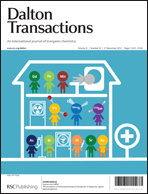Anion binding induced conformational changes exploited for recognition, sensing and pseudorotaxane disassembly†
Abstract
Investigations to exploit the anion binding induced conformational changes displayed by a new class of acyclic receptor for anion recognition, fluorescence sensing and


 Please wait while we load your content...
Please wait while we load your content...